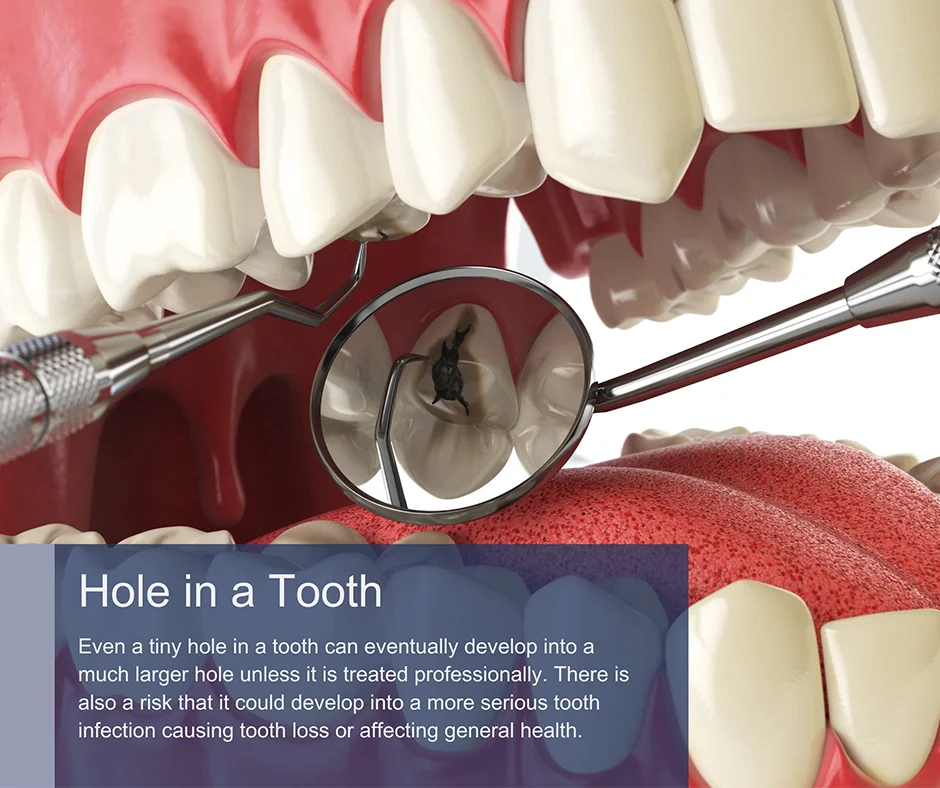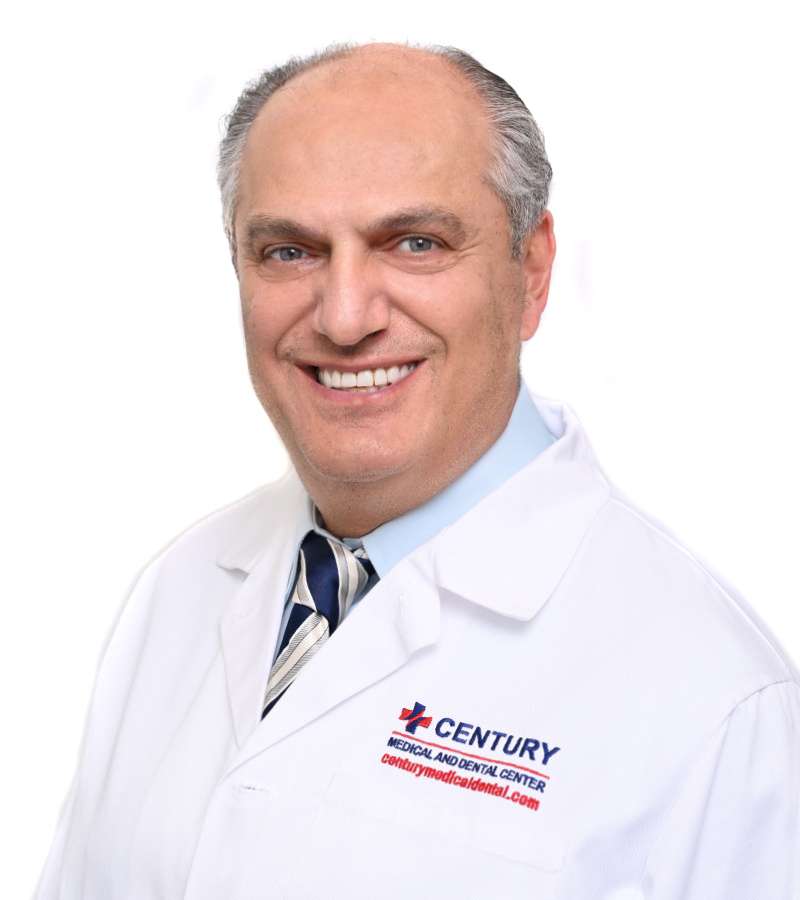

We accept most insurances, including Medicaid, Medicare, checks, cash, credit cards, and Care Credit Financing.
Copyright ©2025
Century Dentistry Center
Table of contents
Even a tiny hole in a tooth can eventually develop into a much larger hole unless it is treated professionally. There is also a risk that it could develop into a more serious tooth infection causing tooth loss or affecting general health.
A hole in can be a sign of a cavity and indicate the first signs of tooth decay, or it may be present because you have lost a filling. A hole in a tooth typically develops due to acid erosion, where acids produced by bacteria in your mouth gradually erode the tooth enamel, eventually causing a hole or tooth decay. These bacteria are found in dental plaque, a sticky biofilm that continually forms over teeth.
Usually, problems with tooth decay develop because of a lack of oral care, allowing dental plaque to build up over tooth surfaces. Unless dental plaque is removed regularly by brushing and flossing, it hardens into tartar within a couple of days and, at this stage, can only be removed during a professional dental cleaning at Century Dental.
Acid erosion can also occur if you eat a lot of naturally acidic foods. It’s also more likely to affect people with medical problems like acid reflux, where strong stomach acid washes back up into their mouth, or dry mouth, where they cannot produce enough saliva to wash away harmful bacteria and reduce acidity levels in the mouth more quickly.
A hole in a tooth can typically develop in the chewing surface of a tooth, where dental plaque and food particles can become trapped, as these food particles feed the bacteria found in dental plaque, allowing them to thrive. If you have gum disease, it can cause gum recession exposing the tooth roots that are not covered with protective tooth enamel and are more easily eroded so that you may develop a hole in a tooth root.

A tiny hole in a tooth may not cause any symptoms, but if it is a bit deeper, it can cause tooth pain when you bite or chew. You may feel tooth sensitivity when drinking hot and cold liquids or eating anything sweet or sour.
Tooth pain or sensitivity is a sign that something is wrong and requires a professional dental evaluation. The problem with leaving a hole in your tooth untreated is that it can develop into a much larger cavity without causing any significant symptoms. Even a tiny hole may mask a much larger cavity underneath, leaving you at risk of biting down one day and finding the tooth crumbles away. When you get the proper professional dental care, a hole in a tooth is often easy to mend.
Thorough efficient and knows his stuff. Felt good...Smile even better...
The only real way to permanently relieve pain from a hole in a tooth is to see a dentist for professional dental care. In the meantime, you can temporarily relieve pain with over-the-counter painkillers. Avoid biting down on the tooth or exposing it to temperature changes or sweet foods that could cause sensitivity and pain. Ensure you brush the tooth gently using fluoride toothpaste; you may find it more comfortable to use toothpaste formulated for sensitive teeth. This toothpaste contains ingredients designed to mask the discomfort caused by sensitive teeth and is more effective the more often you use it, so it can take several weeks to get the full benefits.
You might be able to purchase temporary dental cement over the counter that you can use to patch a hole in a tooth until you can see a dentist. Another option is to insert a small piece of sugar-free gum into the cavity to help protect it. However, these fixes are temporary and no substitute for professional dental care. Without proper dental care, the infection and decay will worsen, requiring more extensive treatment.

Family Dentist
Brooklyn
Gravesend

Family Dentist
Manhattan
Manhattan

Family Dentist
Brooklyn & Manhattan
Manhattan, Downtown

Dentist
Brooklyn & Manhattan
Gravesend, Manhattan, Downtown

Dentist
Manhattan
Manhattan

Dentist
Brooklyn & Manhattan
Manhattan, Livingston

Dentist
Brooklyn & Manhattan
Manhattan, Livingston
If you suspect you have a hole in your tooth or can see a tiny pit or lesion in a tooth, schedule an appointment to see us at Century Dental. Our dentist can check the condition of each tooth, carefully testing your tooth enamel for any signs of softness or lesions. If we find a hole, we can take a dental x-ray showing the extent of the infection and decay inside the tooth.
Almost certainly, yes, usually with tooth-colored composite resin to fill the cavity nearly invisibly. If the cavity is larger and has reached the dental pulp, you may need a root canal treatment to remove the damaged and infected dental pulp, infection from worsening. In this case, the tooth is restored with a dental crown that covers it entirely because we need to create a larger opening in the tooth to access the pulp, and placing an ordinary filling wouldn’t be strong enough to restore the tooth properly.
Treating a cavity in a tooth with a small or medium-sized filling is usually very inexpensive, but the cost may be more if you need root canal treatment or a crown to restore the tooth. Dental insurance will almost certainly cover at least part or all treatment costs depending on the restoration required.
Century Medical and Dental Center is an accredited healthcare facility in NY that operates in accordance with Article 28, a public health law. This law regulates and recognizes accreditation for public healthcare facilities, ensuring they are licensed and operated correctly. By undergoing the Article 28 process and achieving accreditation, Century Medical and Dental Center demonstrates its commitment to meeting the highest standards of care.
As a multidisciplinary medical center, we have highly qualified doctors, nurses, and support staff who are working hard to provide the best medical care to patients in Midtown Manhattan, NY, Downtown Brooklyn, NY, including Brooklyn Heights, Dumbo, Prospect Heights, Park Slope, Clinton Hill, Boerum Hill, Red Hook, and Bedford-Stuyvesant.